Datacenters are the backbone of modern technology, powering everything from cloud computing to online services. One crucial aspect of datacenter operations is cooling, as the heat generated by servers and other hardware can quickly become a major issue. In recent years, datacenter liquid cooling has emerged as a highly efficient and effective solution to address this challenge. This comprehensive guide explores the advantages of datacenter liquid cooling and its potential impact on the future of datacenter operations.
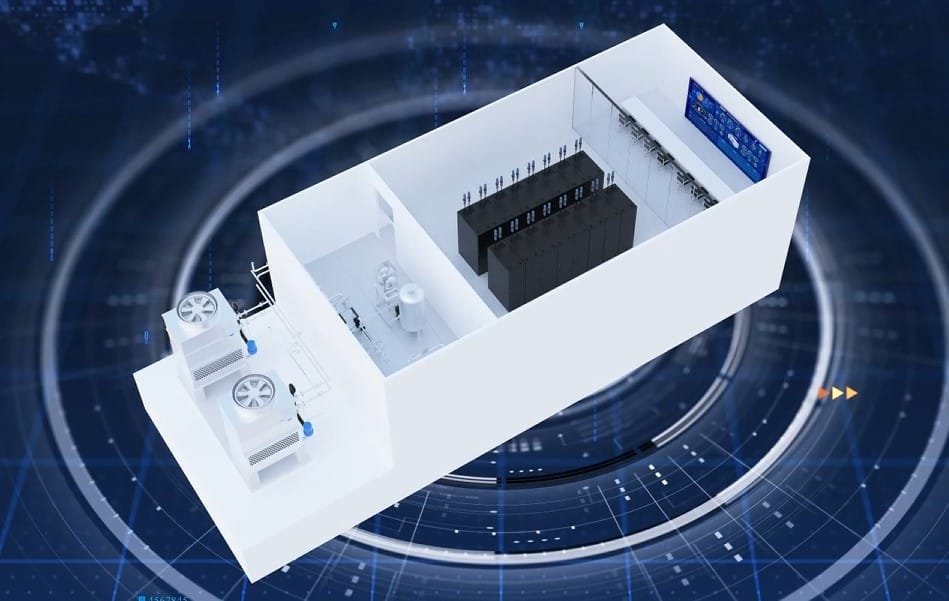
Understanding Datacenter Liquid Cooling
Traditional air cooling is no longer sufficient to ensure reliable, efficient, and stable chip operations, highlighting the pain points in backend computational infrastructure and becoming a bottleneck in AI industry development.
The Basics of Liquid Cooling Technology
At its core, liquid cooling involves using a liquid medium to absorb and dissipate heat from electronic components. Instead of relying solely on traditional air cooling methods, liquid cooling offers a more efficient way to manage heat in datacenters. The liquid coolant is circulated through a network of tubes and heat exchangers, efficiently cooling the hardware and maintaining optimal operating temperatures.
One of the key advantages of liquid cooling is its ability to provide targeted and precise cooling. Unlike air cooling, which relies on fans to circulate cool air around the components, liquid cooling allows for direct contact between the coolant and the heat-generating components. This direct contact ensures that the heat is efficiently transferred away from the components, resulting in lower operating temperatures and improved performance.
Furthermore, liquid cooling systems are designed to be highly efficient. The coolant used in these systems has a higher heat capacity than air, meaning it can absorb more heat before reaching its saturation point. This allows for more effective heat dissipation, as the liquid coolant can absorb and carry away a larger amount of heat from the components.
How Liquid Cooling Works in Datacenters
In datacenters, liquid cooling is typically implemented through two main methods: direct-to-chip and immersion cooling. In direct-to-chip cooling, a liquid cooling system is integrated directly into the server or other hardware component, providing precise and targeted cooling.
Direct-to-Chip (D2C)
Direct-to-chip (D2C) cooling involves the use of specialized cooling blocks or cold plates that are in direct contact with the heat-generating components. The liquid coolant, usually a mixture of water and additives to enhance its thermal properties, is circulated through these cooling blocks, absorbing the heat and carrying it away. The heated coolant is then passed through a heat exchanger, where the heat is transferred to a separate cooling medium, such as chilled water or air, before being recirculated.
Immersion Cooling
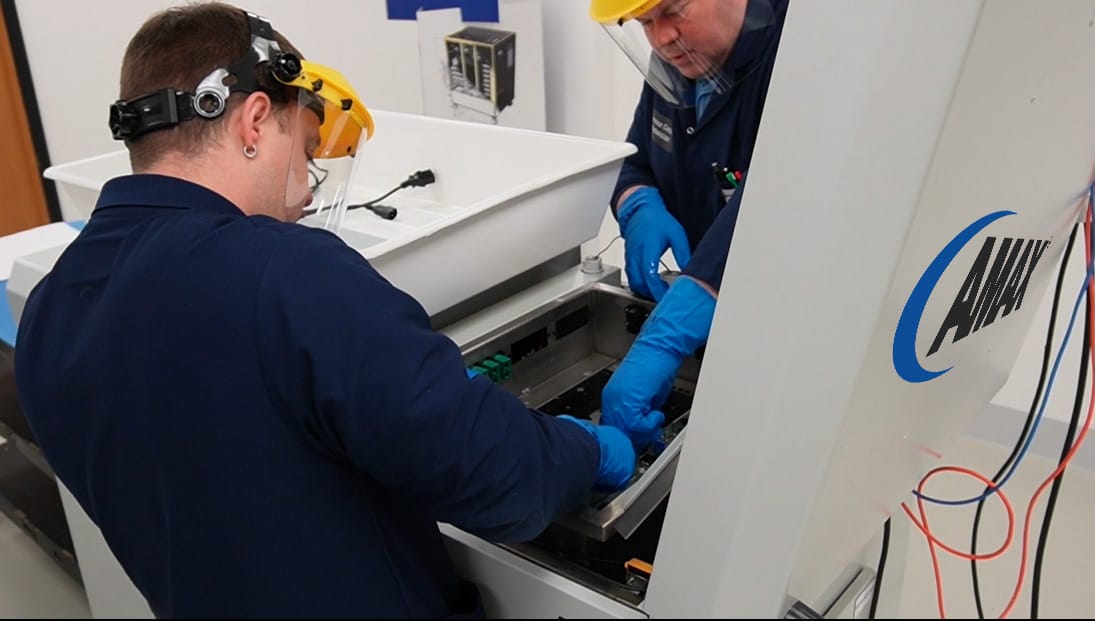
Immersion cooling, on the other hand, involves fully submerging the hardware in a dielectric liquid, effectively cooling all components simultaneously. This method eliminates the need for individual cooling blocks or cold plates, as the entire hardware is immersed in the liquid coolant.
The dielectric liquid used in immersion cooling is specifically designed to be non-conductive, ensuring that it does not damage the hardware. The liquid coolant absorbs the heat generated by the components, and as it circulates, it passes through a heat exchanger to dissipate the heat. The cooled liquid is then recirculated back into the immersion tank, completing the cooling cycle.
Both direct-to-chip and immersion cooling methods have their own advantages and considerations. Direct-to-chip cooling provides precise cooling and is suitable for high-performance computing applications that require targeted cooling. On the other hand, immersion cooling offers a more simplified and efficient cooling solution, especially for large-scale datacenters with a high density of hardware.
Overall, liquid cooling technology has revolutionized the way datacenters manage heat. By utilizing a liquid medium to absorb and dissipate heat, liquid cooling offers improved cooling efficiency, lower operating temperatures, and enhanced performance for datacenter hardware.
What's Next For Liquid Cooling?
This rapid integration of generative AI across diverse sectors has catalyzed an influx of novel technologies, products, business methodologies, and formats. The cornerstone of this innovation, computational infrastructure, is witnessing an unprecedented surge in demand. However, this development is not without its challenges. The quest for augmented computational power has led to a significant rise in the power consumption of essential chips and components, with peak performances reaching 350W for 4th Gen Intel® Xeon® Scalable processors, 400W for AMD's EPYC™ 9004 series , and a staggering 700W for NVIDIA's newest H200 GPU. The limitations of traditional air cooling methods have become increasingly apparent, failing to ensure dependable, efficient, and stable operations of chips, thereby posing a bottleneck in the progression of the AI industry.
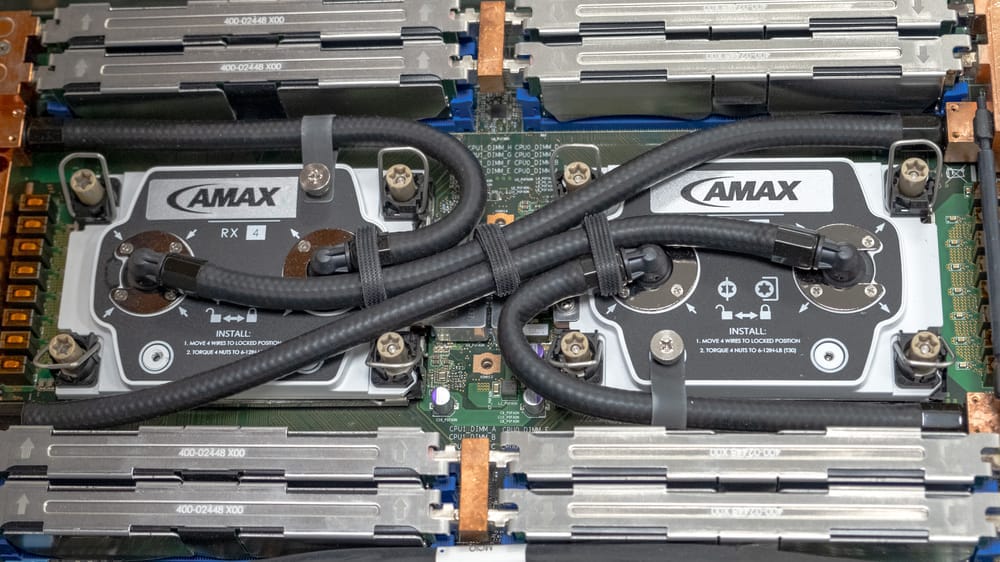
AMAX specializes in advanced liquid cooling computing solutions, designed to cover a broad spectrum of applications. Our expertise extends from edge devices to workstations and data center clusters. Our product range includes liquid cooling components, edge industrial control devices, workstations, rack servers, full cabinets, and data center clusters. This technology has been effectively utilized in areas like L4 autonomous driving, intelligent healthcare, academic research, and extensive AI model training.
Key Product Offerings:
- Liquid Cooling Solution for Edge Computing
- High-Performance Workstation Liquid Cooling Solution
- Rack Server Liquid Cooling Solution
As the liquid cooling technology continues to mature and become more cost-effective, supported by favorable policies, its adoption in computational infrastructure is on an upward trajectory. However, the journey to widespread adoption is still ongoing, with a considerable 80%-90% of existing computational infrastructure reliant on air cooling. Transitioning these systems to liquid cooling is fraught with challenges, including the technical complexities of adapting complex components, ensuring leak reliability, and the high costs associated with such transformations. Additionally, the diversity in industry-specific needs complicates the development of a standardized liquid cooling retrofit solution.
At AMAX, our expertise encompasses a comprehensive range of technologies including liquid-cooled server systems, heat exchange dynamics, pump-driven heat exchange, cold plate liquid cooling, and exhaustive liquid cooling designs for CPUs and GPUs. This encompasses a holistic approach to optimizing key technological models, encompassing manufacturing techniques, in-house research and design, rigorous testing, validation, and synchronized production.
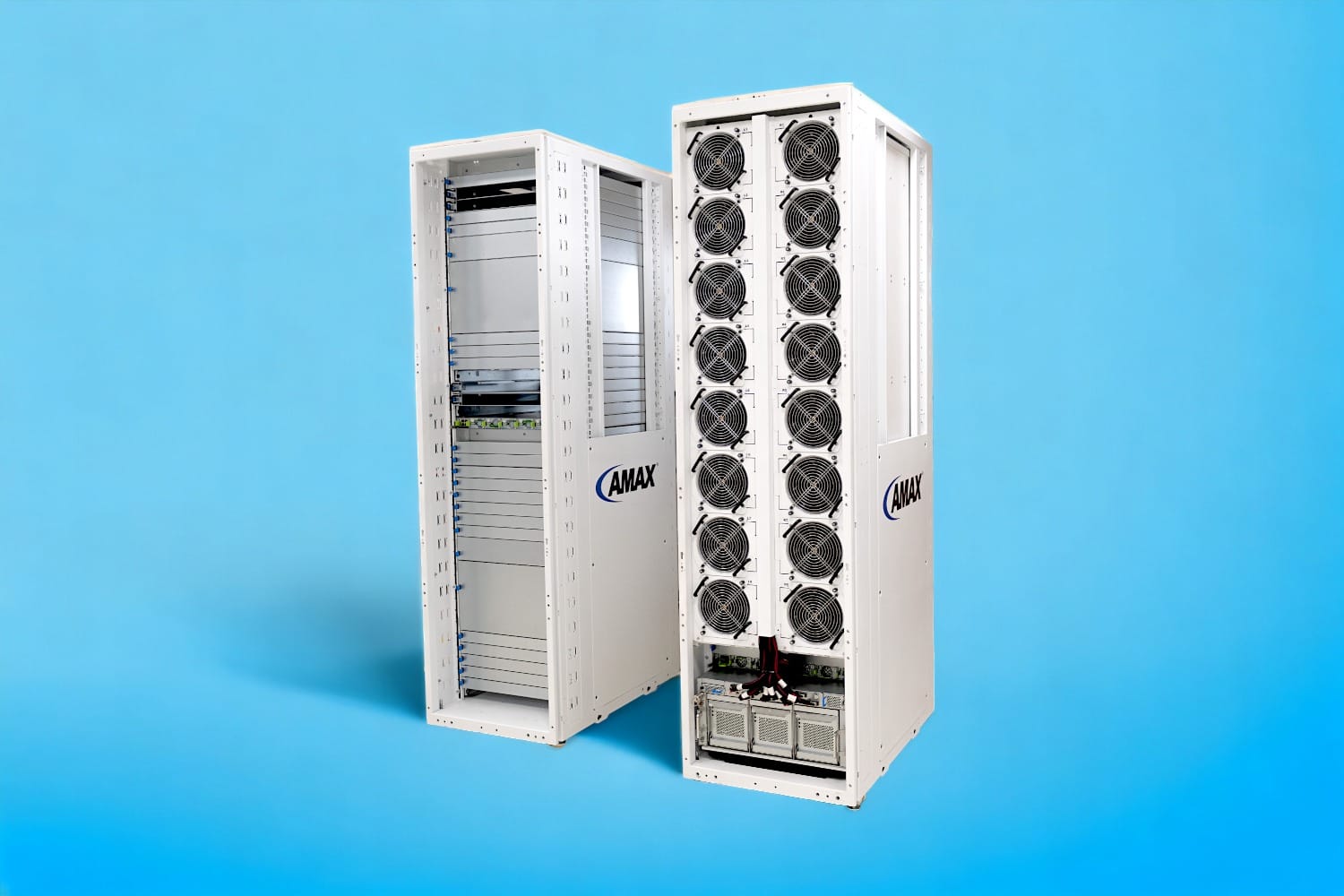
The Need for Efficient Cooling in Datacenters
Datacenters play a critical role in today's digital age, serving as the backbone of various industries that rely on data storage and processing. Within these datacenters, efficient cooling is of utmost importance, as excessive heat can lead to hardware failure, reduced performance, and increased energy consumption. Without proper cooling mechanisms in place, datacenters would be prone to overheating, jeopardizing the reliability, longevity, and energy efficiency of the entire infrastructure.
The Role of Cooling in Datacenter Operations
When it comes to datacenter operations, cooling is not just a luxury but a necessity. The massive amount of computing power and data processing that occurs within these facilities generates an immense amount of heat. Without effective cooling systems, this heat would accumulate, causing equipment to malfunction and potentially leading to catastrophic failures.
Efficient cooling mechanisms are designed to maintain the optimal temperature range for datacenter equipment, ensuring that it operates at peak performance. By keeping the temperature within the recommended limits, datacenters can minimize the risk of hardware failures and extend the lifespan of their equipment. Additionally, efficient cooling can also contribute to energy savings, as it reduces the need for excessive power consumption to compensate for heat-related issues.
Traditional Air Cooling vs. Liquid Cooling
Traditionally, datacenters have relied on air cooling methods, utilizing fans and air conditioning systems to remove heat from the equipment. While this approach has been widely used, it has its limitations in terms of cooling capacity and energy efficiency.
One of the primary challenges with air cooling is its limited ability to dissipate heat efficiently. As datacenter equipment becomes more powerful and densely packed, the heat generated increases exponentially. Air cooling struggles to keep up with this escalating demand, often resulting in hotspots and uneven cooling distribution within the facility.
Liquid cooling, on the other hand, offers a promising alternative to traditional air cooling methods. By utilizing liquid mediums with higher heat capacity and thermal conductivity, datacenters can achieve superior cooling efficiency. Liquid cooling solutions can effectively absorb and dissipate heat, ensuring that the equipment operates within the desired temperature range.
Moreover, liquid cooling systems can be designed to provide more precise and targeted cooling, eliminating hotspots and ensuring uniform temperature distribution throughout the datacenter. This not only improves the overall reliability of the infrastructure but also enhances the performance of the equipment, as it can operate at optimal conditions.
Furthermore, the energy efficiency of liquid cooling solutions is a significant advantage. By efficiently removing heat from the equipment, datacenters can reduce the need for excessive power consumption to counteract heat-related issues. This, in turn, leads to substantial energy savings, making liquid cooling an environmentally friendly choice for datacenter operators.
In conclusion, while traditional air cooling methods have served datacenters well in the past, the increasing demands for cooling efficiency and energy savings have led to the rise of liquid cooling solutions. Liquid cooling offers superior heat dissipation, precise temperature control, and significant energy savings, making it a compelling choice for datacenter operators looking to optimize their operations. By embracing efficient cooling technologies, datacenters can ensure the reliability, longevity, and energy efficiency of their infrastructure, ultimately enabling them to meet the ever-growing demands of the digital world.
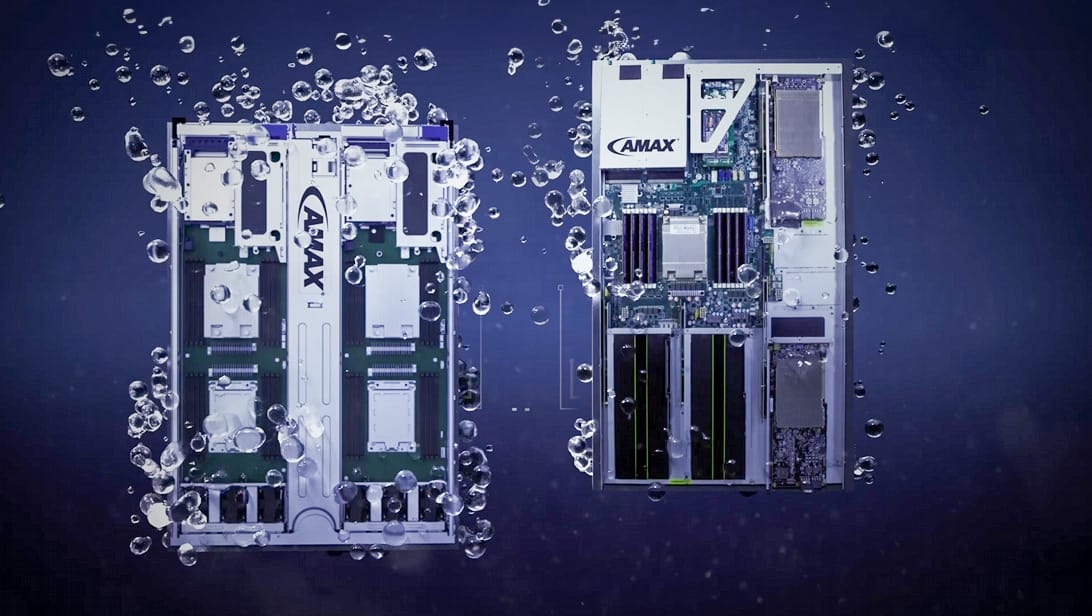
Key Advantages of Datacenter Liquid Cooling
Datacenters are the backbone of our digital world, housing the critical hardware that powers our online activities. As the demand for data processing and storage continues to grow exponentially, the need for efficient and sustainable cooling solutions becomes paramount. One such solution that has gained significant traction in recent years is datacenter liquid cooling. Let's explore some of the key advantages that make this technology a game-changer in the industry.
Enhanced Energy Efficiency
One of the primary advantages of datacenter liquid cooling is its enhanced energy efficiency. Traditional air cooling systems rely on fans to circulate cool air around the equipment, which consumes a considerable amount of energy. In contrast, liquid cooling uses a specialized coolant to directly cool the hardware, eliminating the need for excessive air circulation. This targeted cooling approach significantly reduces energy consumption, resulting in lower operating costs for datacenters. Moreover, the reduced energy usage also translates into environmental benefits, as datacenters contribute less to carbon emissions, making liquid cooling a sustainable solution for the future.
But the benefits of enhanced energy efficiency go beyond cost savings and environmental impact. By maintaining optimal operating temperatures, liquid cooling ensures that the hardware operates at peak performance. Heat is a notorious enemy of electronic components, and excessive heat can lead to reduced performance and even hardware failure. With liquid cooling, datacenters can provide a consistent and controlled cooling environment, maximizing the efficiency and lifespan of their critical equipment.
Increased Hardware Lifespan
Heat is a significant factor contributing to hardware failure. When electronic components are exposed to high temperatures for prolonged periods, their reliability and lifespan are compromised. By implementing liquid cooling, datacenters can ensure that their critical equipment operates within the recommended temperature range, reducing the risk of premature component failure. This not only saves datacenters from the hassle of frequent hardware replacements but also translates into significant cost savings in the long run. Moreover, with increased hardware lifespan, datacenters can offer better service reliability to their customers, resulting in improved customer satisfaction and loyalty.
Furthermore, the extended lifespan of hardware also has a positive environmental impact. The production and disposal of electronic components contribute to electronic waste, which is a growing concern globally. By maximizing the lifespan of hardware through efficient cooling, datacenters can minimize the amount of electronic waste generated, aligning with sustainable practices and reducing their carbon footprint.
Space Optimization in Datacenters
Datacenters are often constrained by limited physical space, making efficient space utilization a top priority. Traditional air cooling systems require a significant amount of space for the installation of cooling infrastructure, including large air conditioning units and extensive ductwork. In contrast, liquid cooling can significantly reduce the amount of space required for cooling. The compact nature of liquid cooling solutions allows for better utilization of available space, enabling datacenters to accommodate more hardware and increase their computing power without expanding their physical footprint.
With the space saved from implementing liquid cooling, datacenters can explore new possibilities for expansion and growth. They can allocate the extra space to house additional servers, storage systems, or even create dedicated areas for emerging technologies like artificial intelligence and machine learning. This flexibility in space utilization empowers datacenters to stay ahead of the ever-increasing demand for computing power, ensuring they can meet the needs of their customers without compromising on efficiency or scalability.
Datacenter liquid cooling offers several advantages that make it a compelling choice for modern datacenters. From enhanced energy efficiency and increased hardware lifespan to optimized space utilization, this technology addresses critical challenges faced by datacenters today. As the digital landscape continues to evolve, datacenters must embrace innovative cooling solutions like liquid cooling to ensure they can keep up with the growing demands while minimizing costs, maximizing performance, and reducing their environmental impact.
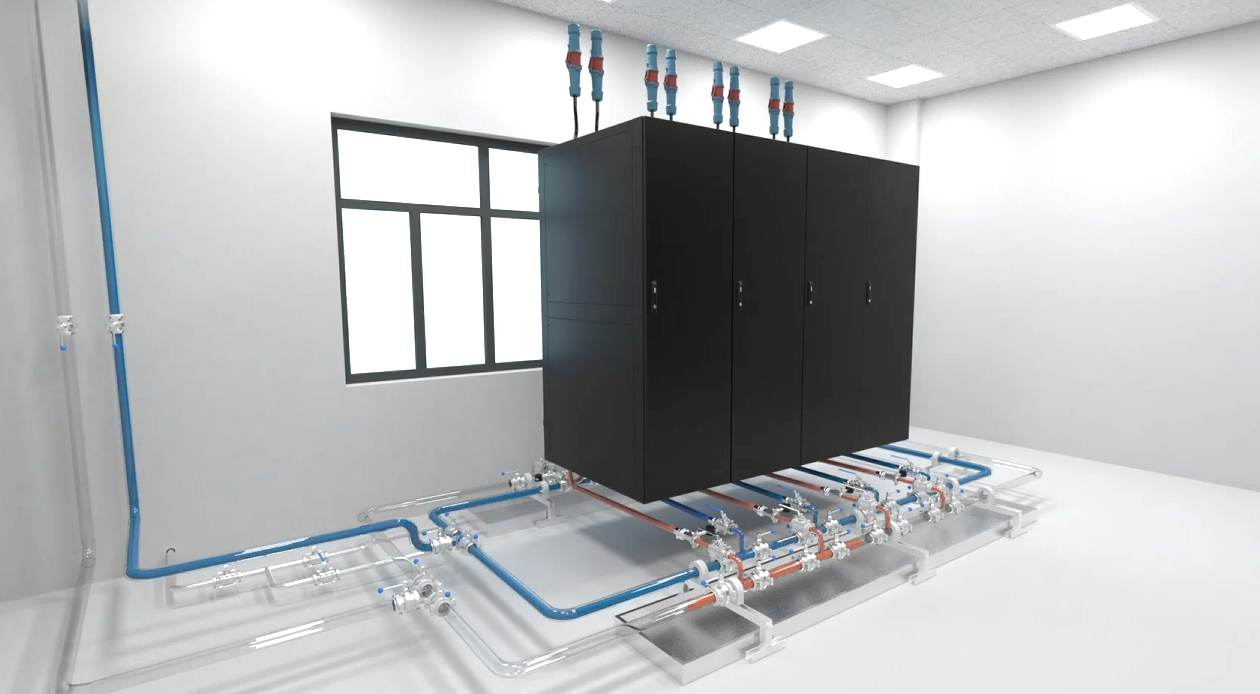
Implementing Liquid Cooling in Your Datacenter
Evaluating the Need for Liquid Cooling
Before transitioning to liquid cooling, it is crucial to evaluate the specific cooling requirements of your datacenter. Factors such as power density, hardware configuration, and cooling capacity need to be taken into account to determine if liquid cooling is the optimal choice. Conducting a thorough assessment of your datacenter infrastructure will provide valuable insights into the feasibility and potential benefits of implementing liquid cooling.
Steps to Transition to Liquid Cooling
The transition to liquid cooling requires careful planning and implementation. It is essential to work with experienced professionals who specialize in datacenter liquid cooling solutions. Steps involved in the transition process may include conducting a cooling assessment, selecting the appropriate liquid cooling technology, ensuring compatibility with existing infrastructure, and implementing the necessary changes. Proper planning and execution are key to a successful transition to liquid cooling.
Future Trends in Datacenter Cooling
Innovations in Liquid Cooling Technology
The field of datacenter liquid cooling is constantly changing, with ongoing innovations and advancements in technology. New liquid cooling solutions are being developed to further enhance efficiency, reduce costs, and improve scalability. From advanced coolant formulations to more efficient heat exchangers, these innovations will shape the future of datacenter cooling and unlock even greater advantages for datacenter operators.
The Future of Datacenter Cooling Solutions
As datacenters continue to expand and evolve, the demand for more sustainable and efficient cooling solutions will intensify. Liquid cooling is expected to play a vital role in meeting these demands, with a shift towards more widespread adoption of liquid cooling technologies. This is driven by the need for higher computing capacities, reduced environmental impact, and improved cost efficiency. The future of datacenter cooling lies in liquid cooling solutions that offer increased efficiency, reliability, and sustainability.
Datacenter liquid cooling offers a wide variety of advantages over traditional air cooling only methods, making it an attractive option for datacenter operators. From enhanced energy efficiency and increased hardware lifespan to space optimization and future-proofing datacenters, liquid cooling is revolutionizing the way datacenters operate. By understanding the fundamentals of liquid cooling technology and carefully evaluating the needs of your datacenter, you can pave the way for a more efficient and sustainable future for your datacenter operations.
To address these challenges present in deploying and scaling datacenter liquid solutions, AMAX Engineering has introduced comprehensive liquid cooling upgrade and retrofit services. These services offer a holistic approach, including needs analysis, solution design, proof of concept, retrofit construction, and verification testing. Tailored to meet the unique requirements of various industries, these services aim to enhance performance while optimizing Total Cost of Ownership (TCO). Contact us for more information about how we can help build your server, workstation, or datacenter liquid cooling solution.

